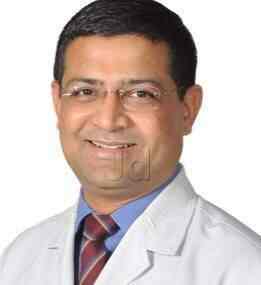Glaucoma or "Kala Motia" is a condition wherein an increased intraocular pressure damages the optic nerve thereby affecting vision. A fluid known as aqueous nourishes the front part of the eye. In the normal eye, the rate of production of aqueous matches the rate of its drainage, thereby maintaining optimal pressure inside the eye. With age, disease, trauma or other factors, the channels carrying this fluid may get blocked, increasing the pressure inside the eye. This increased pressure damages the optic nerve, which is the conduit of visual messages to the brain. Working silently, glaucoma damages the outer or peripheral vision first while maintaining the central vision and if not treated on time it may lead to loss of central vision and blindness.
Glaucoma is also called the silent thief of sight because in the early stages of the disease, there may be no symptoms. By the time glaucoma is detected, the patient has already suffered extensive peripheral vision damage which can no longer be restored. The statistics reveal that by the time people realize that something is amiss and consult a doctor for glaucoma treatment, 90% of them have lost half of their vision. It comes so slowly that it goes unnoticed in most of the people. Worldwide, it is the leading cause of irreversible blindness.
Early detection is the key to preserve vision. Once detected, glaucoma can be controlled by medicines (eye drops) or surgery to prevent further vision loss. This can only be done through disciplined and regular glaucoma treatment from an eye specialist. Treatment of Glaucoma is life-long. Glaucoma treatment may include medical management, surgical management or management by lasers.
In recent times, there have been a number of advancements in glaucoma management. In the investigational aspect, we now have more sophisticated machines that are able to detect glaucoma at a very early stage, when no damage to the fibers of the eyes has occurred. This helps in starting the glaucoma treatment on time, thereby actually preventing the onset of any possible damage to the eye.
A major step in this field has been the introduction of contact lens-based techniques in the market, which can record changes in intraocular pressure for 24 hours at a go. This provides clues to therapeutic efficacy besides giving an inkling into the type of glaucoma in a person. The availability of superior anti-glaucoma eye drops has also helped a lot. Newer formulations in medications have been introduced lately, creating a wider choice of treatment options for ophthalmologists.
Management of glaucoma by lasers has also seen the introduction of newer technology, where acute angle closure can be promptly dealt with, even when the conventional technique of making a hole by YAG laser does not yield the desired results. Apart from these breakthroughs, at Centre for Sight, we also possess a number of new techniques in glaucoma surgery, such as planting the glaucoma filtration device (for controlled filtration), new types of valves, and the use of sophisticated vitreoretinal techniques to help conduct complicated glaucoma procedures. This makes Centre for Sight the preferred destination for the best glaucoma treatment in Bhuj.
The introduction of sophisticated techniques for glaucoma treatment provides tremendous hope for the future of comprehensive medical and surgical management of glaucoma. Centre for Sight has a panel of experienced glaucoma specialists specializing in and providing advanced glaucoma treatment in Delhi.
The goal of glaucoma treatment is to lower pressure in the eye, thereby reducing the damage to the optic nerve. To treat your condition, your doctor may choose to either lower the eye pressure through medicated eye drops, improve drainage of fluid in the eye, or lower the amount of fluid produced in the eye. With a panel of experienced glaucoma specialists, Centre for Sight is a destination for the treatment of glaucoma in Bhuj and India.

